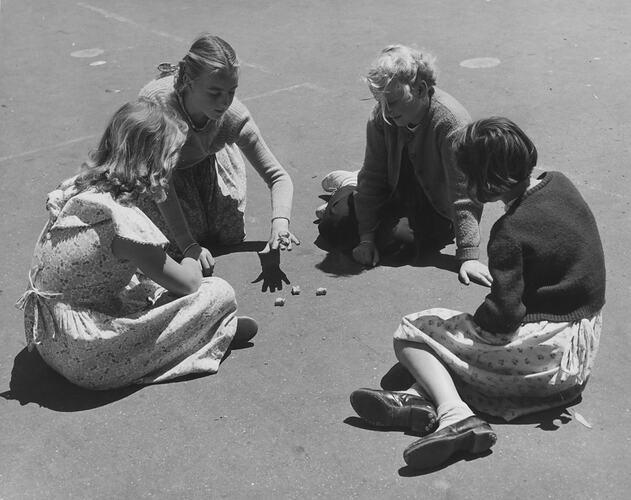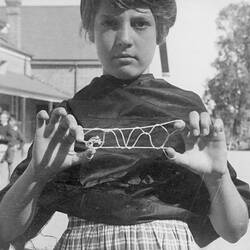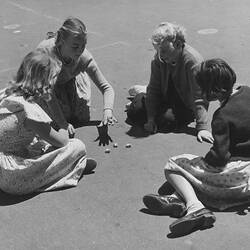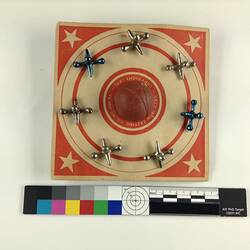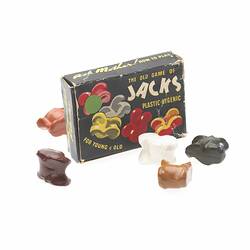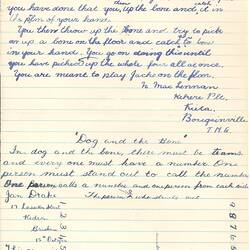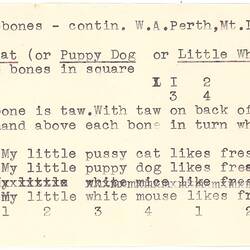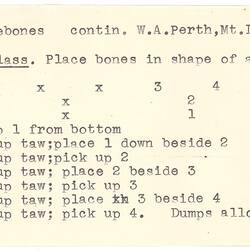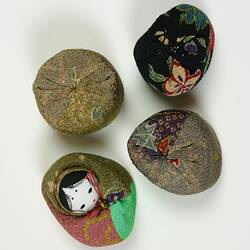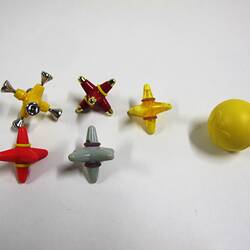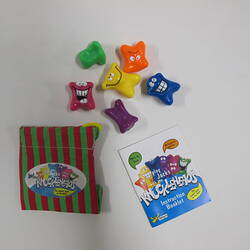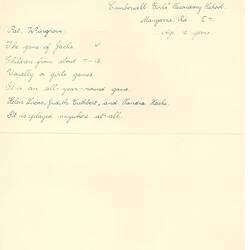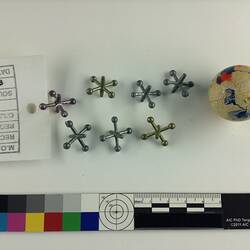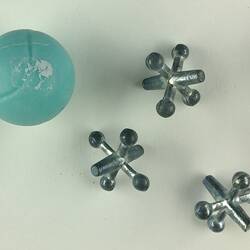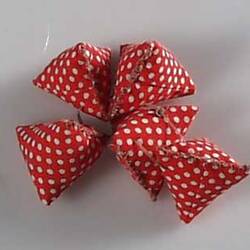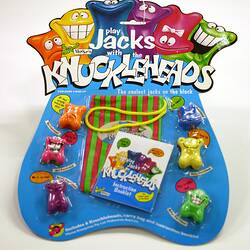Jacks, or Knucklebones as it was traditionally known, is one of the oldest games in the world. Knucklebones comes from the ancient Greek version of the game using sheep's knucklebones. Its origins are ancient and different versions of the game can be found in many countries worldwide.
Jacks is a game that uses a wide range of materials - whatever is locally found and easily available. A 'jack' can be a sheep's knucklebone, a bamboo chopstick, a stone, a small rice filled bag or a small ball. No doubt there are other materials used elsewhere in the world.
The process of throwing a 'jack' in the air, picking another jack up off the floor, then catching the jack as it falls to the ground, is a common theme. This process is usually repeated, with increasingly difficult actions that the player must perform before catching the jack in the air.
Dorothy Howard, an American Fulbright scholar, documented the game of Knucklebones during her 1950s study tour of Australian children's playground games in the 1950s. Her published monograph 'The Game of Knucklebones in Australia' is in the Australian Children's Folklore Collection. (See also the online narrative: The Game of Knucklebones in the Dorothy Howard Collection.)
In 1988 the Melbourne-based Children's Museum created an exhibition of children's traditional games called You're It. The exhibition was highly interactive featuring Jacks along with three other well-known traditional games: Marbles, String figures and Hopscotch.
The exhibition focused on the history and universality of these games and showcased variants known to recently arrived, and not so recently arrived, migrants, both adults and children. The game of Jacks (or Knucklebones) resonated with many of these informants and brought forth variants played in their country of birth.
The You're It exhibition developed explanatory materials and provided spaces for visitors to learn about and play some different variations. The following games were featured:
O-Tedama: a Japanese game played by Mrs Miyoko Yasaki in Japan using six small silk bags filled with rice.
Knucklebones: the traditional Australian game using five sheep's knucklebones dyed different colours.
Danh Dua:a Vietnamese game played by Minh Thu Ngo in Vietnam in the 1960s using 10 chopsticks and a ball.
Jacks: an American variant played by Deborah Klein in Louisiana, USA in the 1960s using six small metal star shaped jacks and a small rubber ball.
References
Mckinty, J. Knucklebone history, unpublished.
Howard, D., 1960. 'The Game of Knucklebones in Australia'. Reprinted from Western Folklorein Darian-Smith, K. and Factor, J., 2005. Child's Play, pp. 123-140.
More Information
-
Keywords
Australian Children's Folklore Collection, Children's Folklore, Folklore, Childhood, Games
-
Authors
-
Article types
